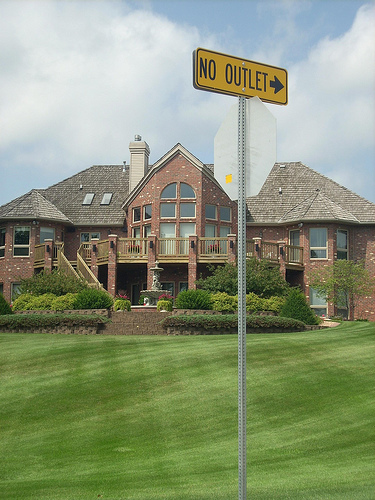WSJ: McMansions aren't what they used to be

Posted July 3, 2009 at 1:18PM
In an article published in The Wall Street Journal on June 29, June Fletcher reports a new survey showing that large houses have fallen out of favor with the American homebuying market:
"A new study out Monday by the American Institute of Architects shows that Americans have fallen out of love with McMansions. The 500 residential architects surveyed said that only 4% of their clients wanted more square footage in their homes this year, compared to 16% last year.
"This desire isn't surprising, given both the recession and the fact that the most recent U.S. Census shows that there are 77 million people in the "empty-nester" phase of life, from ages 45 to 64, and 61 million in the first-time buyer category, from 20 to 34 . . .
"A survey released this month by the National Association of Home Builders shows that the average home started during the first quarter of 2009 was 2,335 square feet, down from 2,629 square feet during the second quarter of 2008. And 59% of builders surveyed in May by the trade association said that they are planning on building smaller homes in the coming year. Only 1% reported that they would be building bigger homes."
NAHB, perhaps unsurprisingly, claims that the downturn in the McMansion market will be temporary, related only to the recession. But longer-term demographic forecasts portend otherwise, as a larger share of US households will be smaller and childless over the next few decades than has been the case in the recent past.
Fletcher notes that denser housing patterns will require zoning changes in much of American suburbia. But she also cites a story in this month's Urban Land to the effect that several big suburban builders, including K. Hovnanian, KB Homes and Toll Brothers, have started divisions for building urban housing, while other companies have started to convert failed suburban shopping malls, office parks, car dealerships and even golf courses into denser mixed-used buildings.
